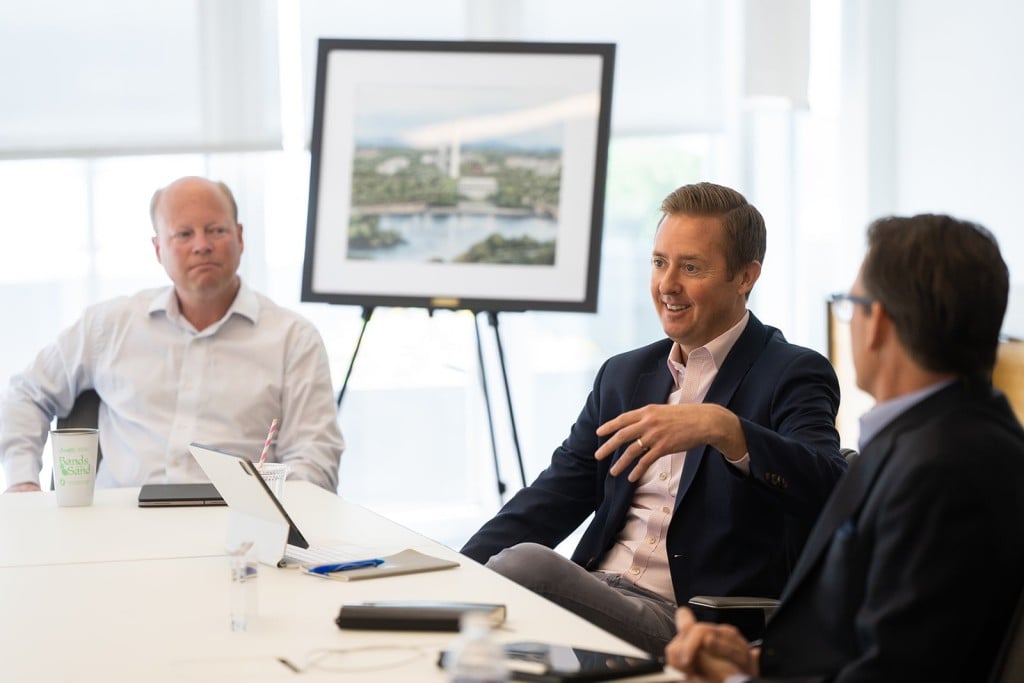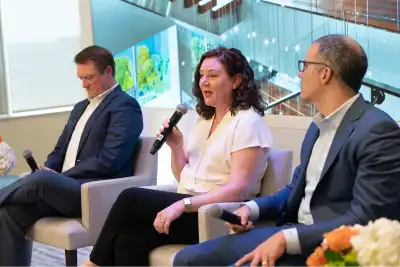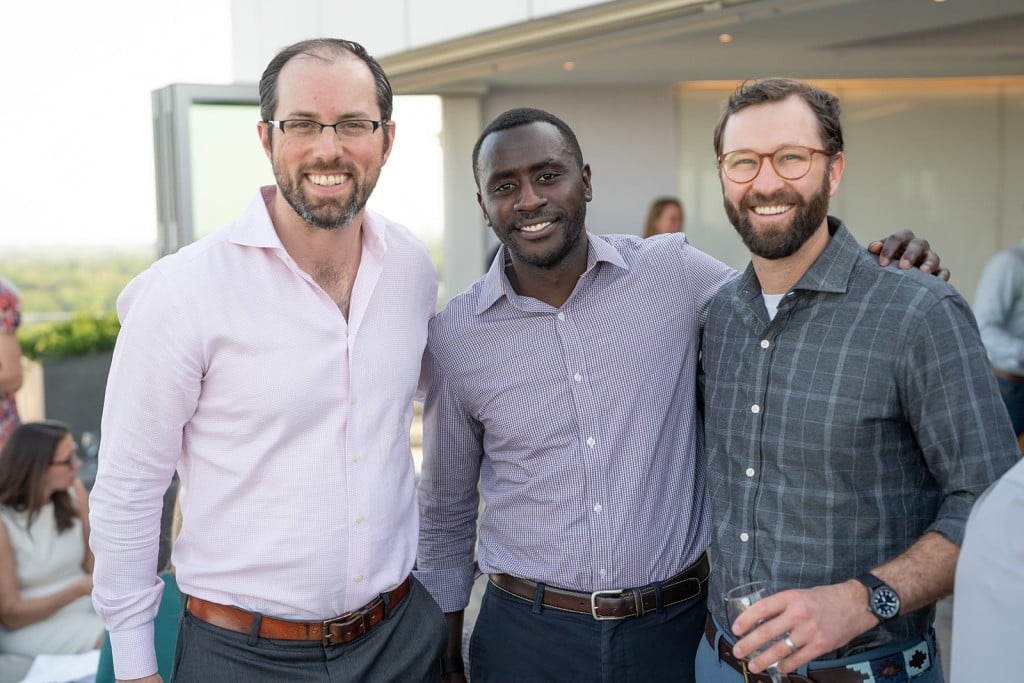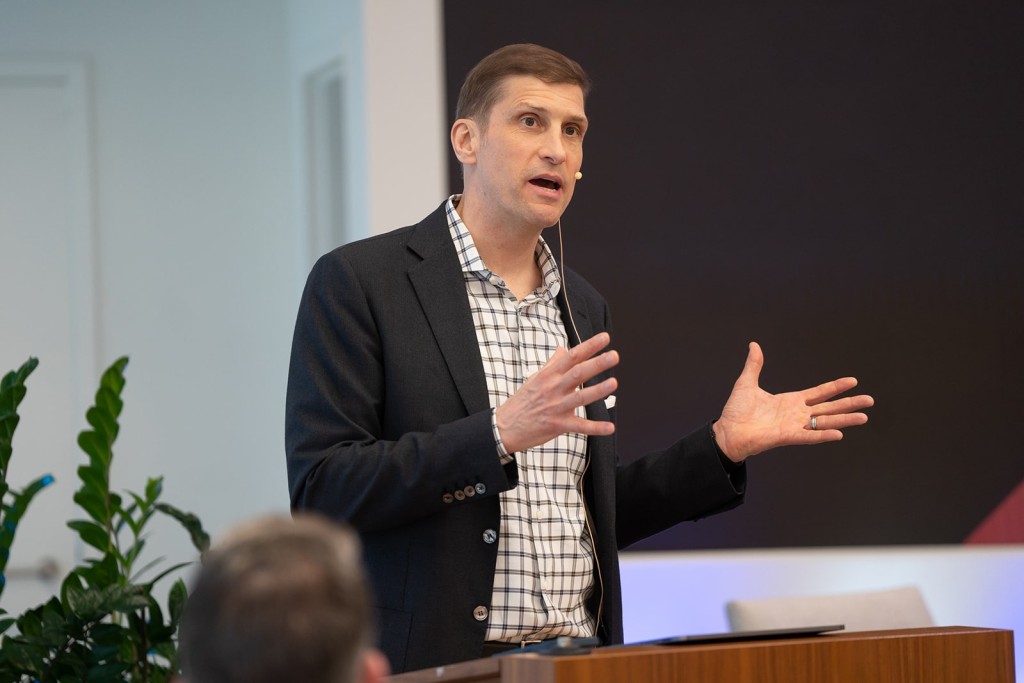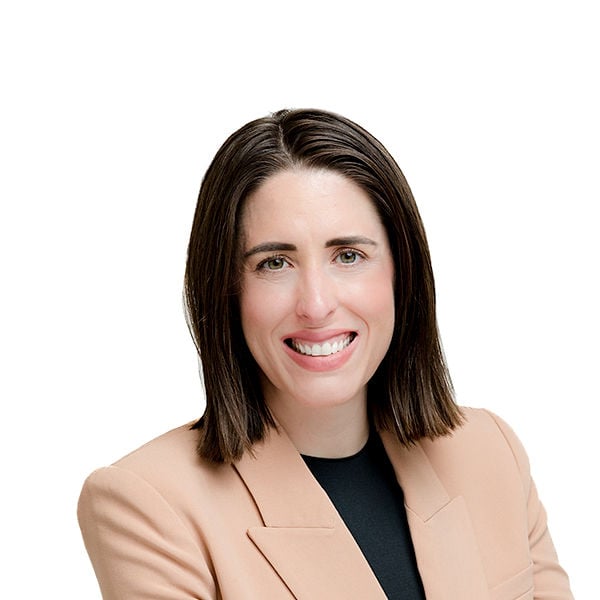Contributors
Related Articles
Stay Up To Date
Something has gone wrong, check that all fields have been filled in correctly. If you have adblock, disable it.
The form was sent successfully
Human capital is far more than a cost center for a business. It’s both the engine of sustainable growth and an early warning system for emerging risks. By combining on-the-ground cultural research with rigorous financial examination, we seek to identify firms whose people practices create virtuous flywheels of motivation, productivity, and innovation and steer clear of those whose workforce shortcomings threaten long-term value.
Key Points
- Firms that embed deliberate talent investment into recruitment, development, and culture tend to cultivate innovation and client relationships that underpin durable competitive advantage.
- Shifts in human capital indicators—whether rising attrition, leadership turnover, or lagging diversity metrics—can serve as a critical early warning system for operational, reputational, and financial headwinds.
- In our view, thinking creatively about the importance of human capital is especially important for the innovative, asset-light, fast-growing technology and tech-related businesses.
In 2003, four friends huddled over pints in a Buenos Aires bar. There, they sketched the blueprint for a company built on a conviction: invest in people first, technology second. They called it Globant. Two decades and 30,000 employees later, that humble brainstorm has blossomed into a global tech powerhouse whose in-house “Globant University” and AI-driven StarMeUp workplace recognition and team-building application have driven annual employee turnover below 10 percent in an industry in which turnover often tops 25 percent. 1, 2
That transformation from barroom napkin to a market leader in digital transformation illustrates one of our fundamental beliefs as long-term investors.3 Human capital is not a mere line item but the engine of sustainable growth. Companies that deliberately recruit, train, and empower their people, rather than doing it as an afterthought, can unlock virtuous cycles of innovation, productivity, and client loyalty.
We believe Globant’s story illustrates the importance of creative thinking about human capital and how it can be a differentiator, especially for the innovative, asset-light, fast-growing technology and tech-related businesses that make up a significant portion of our portfolio companies. In these businesses, which face a serious labor market shortage of people and leaders with the necessary technical know-how and experience, the employees are the assets that need to be nurtured and valued. That’s why our research and ownership phases involve deep examination of how businesses nurture and retain their people. We engage with businesses on human capital management more than on any other stewardship topic.
At the same time, human capital is our most sensitive barometer of risk. Rising turnover, opaque leadership practices, or stalled diversity initiatives often trigger problems well before the balance sheet reflects the damage. Recognizing these early-warning signals and engaging management before issues metastasize can mean the difference between steering a company safely through turmoil and watching value evaporate.
We believe that firms with robust human capital practices can offer the greatest potential wealth-creation opportunities for our clients. By partnering with management teams, we aim to strengthen talent pipelines, foster inclusive cultures, and align incentives to help our portfolio businesses unleash the full potential of their people and, in turn, drive long-term wealth for our clients.
The Human Capital Imperative
Human capital lies at the intersection of three pillars: leadership quality, talent acquisition, and retention. It is a company’s cultural platform for success. Decades of academic research show that well-rewarded employees working in strong, healthy cultures are integral to value creation.4 We believe developing and utilizing talent is central to sustaining competitive advantage.
Yet in recent years, seismic shifts, such as the pandemic-driven embrace of remote and hybrid work, the rise of the gig-economy, and most recently the explosive adoption of generative artificial intelligence (AI), have upended traditional notions of workplace responsibilities, cohesion, and loyalty. Companies must rethink how they sustain learning, motivation, and community when offices no longer serve as the central gathering place and machines automate many routine tasks, threatening to make tens of millions of roles redundant.5 Sectors, such as manufacturing, retail, logistics, finance and utilities, are those expected to face the fastest displacement.6 We are paying close attention to how our businesses navigate this transition because all paradigm shifts create risks and opportunities. For many companies, a key challenge will be guiding workers through the rapidly changing reality. In a 2025 Reuters survey of global C-suite leaders, 80 percent of leaders reported that their organizations provided AI training. In the same year, however, another Reuters report on AI in professional services found that most professionals had actually received no training.7
Utilized correctly, AI should dramatically amplify rather than displace human talent, making employees both more capable and more efficient. The worst thing companies can do, in our view, is ignore the technology. Fortunately, many organizations are already investing heavily in upskilling. This includes enterprise-wide reskilling initiatives that blend online platforms, hands-on workshops and coach-led cohorts to teach prompt engineering, data literacy, and change resilience. Some have even launched internal AI academies or partnered with universities and vendors to offer certification tracks, tying completion rates to performance incentives and embedding learning goals into annual development plans.
Major technology companies have taken the lead by creating internal “AI academies” and forging partnerships with educational providers. In 2020, for instance, Amazon Web Services announced that it would invest hundreds of millions of dollars to provide free cloud computing and AI training, aiming to upskill 29 million people globally by 2025 through a mix of virtual labs, certification tracks, and hands-on projects. Similarly, Google’s Machine Learning Crash Course and Microsoft’s AI Business School offer role-based curricula designed to accelerate proficiency in generative models for both technical and nontechnical staff.8 By embedding these programs directly into employees’ annual development plans and tying completion rates to performance incentives these firms turn upskilling from an optional perk into a strategic imperative.
We think the combination of strong human capital management and forward-thinking AI implementation strategies will be extremely powerful for companies’ top and bottom lines.
Schooling by Way of Globant
Globant’s journey captures the transformative power of thinking creatively about human capital. From the company’s inception, the founders understood that technical excellence would follow naturally from investing in people. Globant University, the firm’s in-house training academy, offers bespoke programs in coding, design thinking, and leadership. Its StarMeUp platform uses gamified, AI-powered feedback to surface real-time insights into morale and performance. These initiatives have created a virtuous cycle. For example, when inspired employees deliver quality work for marquee clients, such as American Express and Disney (with projects that have included AI-driven queue-optimization cameras and the MagicBand system), their efforts tend to attract even more top talent.
This people-powered approach has demonstrated to be especially potent in booming sectors with acute talent shortages, such as artificial intelligence and software/hardware design. A McKinsey Global Institute survey found that only 16 percent of executives believe they have sufficient technology talent to drive their digital transformations. In comparison, 60 percent cite talent scarcity as a critical obstacle.9 In this competition for talent, Globant’s near-shoring model, which combines competitive Latin American labor costs with proximity to U.S. clients, has not only underpinned a lean cost profile but has also enabled attrition rates that are roughly 10 percentage points below industry norms.10 We monitor employee happiness by analyzing workplace reviews on Glassdoor and assessing internal promotion statistics. This oversight helps us ensure that the human capital edge endures at companies such as Globant as the industry evolves.
As the workplace changes, our analysis of human capital must be granular and holistic. The process demands not only evaluation of upskilling and leadership-development programs but also scrutiny of compensation structures for equity and market competitiveness and close monitoring of diversity and inclusion metrics. Recognizing and acting on these factors requires rigorous integration of people insights into our financial forecasts and, when needed, direct discussion with boards and management teams to course-correct before value is lost.
Making Work Better for People at ServiceNow
When Fred Luddy founded ServiceNow in Santa Clara in 2004, he was keenly aware of the tech talent war and set out with a clear mission “to make work work better for everyone.” Two decades later, that ethos underpins a company with a market capitalization in the hundreds of billions and a workforce that views quality of life as central to performance.
ServiceNow’s approach marries comprehensive well-being programs with clear career pathways. Beyond generous 401(k) matching and flexible paid-time-off policies, the firm offers a $3,000 per employee annual learning stipend, dedicated “innovation weeks” for hands-on exploration of new ideas, and a global mentoring network that connects junior hires with senior technologists. The business has also been a pioneer in the U.S. tech field when it comes to recruiting from nontraditional talent pools, extending the focus from the San Francisco Bay area where many of its competitors recruit and being outspoken about hiring from historically black colleges and universities (HBCUs) and Midwestern universities. This approach has boosted the company’s diversity ambitions and helped the business stay ahead of the competition in its efforts to cultivate the next generation of leaders. Collectively, these investments have driven voluntary turnover down to under 10 percent (nearly half the tech-industry average) and have helped sustain triple-digit subscription-revenue growth year over year.11
Equally critical at ServiceNow has been the alignment of employee incentives with durable company performance, a topic we often discuss in stewardship dialogues with companies. It has conducted firmwide pay-equity audits and has publicly committed to gender-and-ethnicity disclosure. Female representation in leadership grew from 21 percent in 2017 to 33 percent in 2024, and the company’s eNPS (employee net promoter score) climbed into the 70th percentile among software-as-a-service (SaaS) peers.12
In addition, it has expanded its innovation-week model into a year-round “Idea Accelerator,” granting cross-functional teams dedicated time and funding to prototype solutions.
ServiceNow’s human capital efforts are being recognized. The company ranks in the top 5 of all companies and number 1 among software companies in the American Opportunities Index, which measures the best performing companies in the United States in terms of human capital practices.13 Earlier this year, it was also named to Fortune’s Top 100 places to work for a fifth consecutive year, with employees citing employee inclusion and wellness programs alongside significant investment in continuous learning and development opportunities.14
Believing that a better work experience for employees can lead to a more productive workforce, ServiceNow seeks to implement improvements that deliver measurable results. When a fast-growing workforce imposed an unsustainable burden on IT support, ServiceNow decided to start treating employees like customers, shifting to a frictionless IT service delivery model that provides a consumer-like experience. The project has been highly successful, with 85 percent of employees adopting the self-service model, saving more than 215,000 employee hours and increasing IT service desk productivity by 75 percent. Annually, the new process saved $42 million in operational and resource costs while improving employee satisfaction.15
An Ongoing People Partnership
The businesses we admire are those that view employees and managers as strategic partners in value creation. They are also businesses that we admire for their labor standards. Employee retention, motivation, and welfare are important across all sectors in all countries But these factors are critical in markets in which employment standards or human rights issues are under closer scrutiny and where bad practices can be harmful to employees and lead to serious reputational damage.
As a global investor, we own and consider businesses in countries where these risks can be high. This places greater importance on our stewardship approach to comprehensively understand a company’s culture and practices, notably by regularly taking our questions to company management. Our analysts evaluate each company’s human capital management in a culturally sensitive manner, collating extensive, local research to analyze businesses against market norms and context and then comparing these to global practices. We consider what is acceptable and works best in the home country and then compare that to what that means nationally and internationally in terms of business development.
Pandora, the Copenhagen-based global jewelry brand, has built more than a dozen production sites in Thailand, employing over 12,000 people. By rotating managers between Copenhagen and Bangkok, Pandora has developed a leadership bench fluent in both Nordic design flair and Thai craftsmanship. Pandora has also endeavored to be among the most desirable employers for manufacturing jobs in Thailand. It pays its Thai workforce market-leading wages, typically rising five percent annually. It also runs fully air-conditioned factories, which is not that common in Thai manufacturing. All of this reduces employee turnover and retraining costs, while maintaining consistent product quality.16
We have found Pandora to have an attractive supply-chain control thanks to its vertical integration model, meaning it uses relatively few third-party suppliers. This approach gives it clear oversight of—and responsibility for—the welfare of its jewelry producers. Many other brands in the sector outsource production, increasing the risk of working with subpar suppliers operating in poor working conditions who are less able to attract quality staff.
Today, Pandora stands as both the world’s largest jewelry manufacturer by volume and a respected global brand.
Human Capital as an Early Warning System for Emerging Risks
For every Globant, ServiceNow, or Pandora, there are cautionary tales that remind us why human capital diligence must be ongoing. In Thailand, CP All—a major convenience-store operator—became the subject of unsubstantiated but troubling media reports alleging coercive treatment of the owners of its network of family-run shops (effectively its employee base) as the company expanded its store footprint.
This is an important people risk in a business that operates a large franchise network where fair treatment of employee store owners is key to reputational and business success. Close examination of the varied types of human capital risks in different business models is key.
Recognizing that such practices, even if not illegal, could damage local relationships and tarnish the brand, our analysts conducted a thorough review. Despite a lengthy, decade-long investment, we chose to exit our position in CP All when our due diligence failed to allay these and other governance concerns.
Our approach to human capital analysis is mirrored by evolving regulatory expectations. The U.S. Securities and Exchange Commission’s 2020 rule (10) requiring public companies to disclose material human capital metrics underscores the growing consensus that people are an asset. But disclosure alone is not enough. We delve into the quality and transparency of each company’s reporting, engaging directly with management to bolster practices around pay equity, diversity, and worker well-being.
We believe the greatest returns accrue to investors who understand that people are the pulse of every enterprise. By marrying on-the-ground, human capital insights with our fundamental investment discipline, we aim to build portfolios of companies whose cultures, leadership, and talent development practices are not just commendable in theory but are demonstrably potent engines of long-term value.
1 Bill Tanner, “Globant is fastest-growing and 5th strongest IT brand globally,” Intelligent CIO, January 24, 2024, https://www.intelligentcio.com/latam/2024/01/24/globant-is-fastest-growing-and-5th-strongest-it-brand-
2 “Globant Integrated Report 2024,” Globant, https://more.globant.com/en/globants-esg-integrated-report-2024
3 While companies like Accenture, Deloitte, and IBM may hold a larger overall market share in the broader information technology services industry, Globant has carved out a leadership position in specialized areas like digital transformation, according to Rob Hales, “Globant Is a Leader in IT Services for Digital Transformation,” Morningstar, February 24, 2025, https://www.morningstar.com/company-reports/1266629-globant-is-a-leader-in-it-services-for-digital-transformation
4 Mark A. Huselid, “The Impact of Human Resource Management Practices on Turnover, Productivity, and Corporate Financial Performance,” The Academy of Management Journal, June 1995, 635–72. https://www.jstor.org/stable/256741?seq=1
5 “2025: the year companies prepare to disrupt how work gets done,” World Economic Forum, January 20, 2025, https://www.weforum.org/stories/2025/01/ai-2025-workplace/; McKinsey Global Institute, “The state of AI: How organizations are rewiring to capture value,” March 12, 2025, https://www.mckinsey.com/capabilities/quantumblack/our-insights/the-state-of-ai
6 “The Future of Jobs Report,” World Economic Forum, January 7, 2025, https://www.weforum.org/publications/the-future-of-jobs-report-2025/digest/
7 “AI and digital transformation are top C-Suite priorities despite implementation challenges, new report shows,” Thomson Reuters Institute, May 28, 2025, https://www.thomsonreuters.com/en-us/posts/corporates/c-suite-survey-2025/; “2025 Generative AI in Professional Services Report,” Thomson Reuters Institute, 2025, https://www.thomsonreuters.com/en/reports/2025-generative-ai-in-professional-services-report
8 Chip Cutter, “Amazon Wants to train 29 Million People to Work in the Cloud,” Wall Street Journal, December 10, 2020, https://www.wsj.com/lifestyle/careers/amazon-wants-to-train-29-million-people-to-work-in-the-cloud-11607621622?gaa_at=eafs&gaa_n=ASWzDAh8adsGZKd_7_zajZO9TcmQxqQcGSPq06LSrCrgVb6rfgoGL9d0-FE8knfNbb0%3D&gaa_ts=687e9af9&gaa_sig=2NM3h6t-j5pfJ40f0PR3lu8sFNbDNXGD2LgX1yENbN7w-pIcN-ZUTJxKhOK7b3xbdNTY2zxsEiH7YIwumODWWA%3D%3D; Roger Montti, “Google’s Updated Machine Learning Courses Build SEO Understanding,” Search Engine Journal, November 13, 2024, https://www.searchenginejournal.com/googles-updated-machine-learning-courses-build-seo-understanding/532560/; Rich Pell, “Microsoft launches AI business school,” European Business Press: Smart2.0, March 12, 2019, https://www.eenewseurope.com/en/microsoft-launches-ai-business-school; Globant Annual Report.
9 Anu Madgavkar, Bill Schaninger, Dana Maor, Olivia White, Sven Smit, Hamid Samandari, Lola Woetzel, Davis Carlin, and Kanmani Chockalingam, “Performance through people: Transforming human capital into competitive advantage,” McKinsey Global Institute, February 2, 2023, https://www.mckinsey.com/mgi/our-research/performance-through-people-transforming-human-capital-into-competitive-advantage.
10 McKinsey Global Institute, “Performance through people: Transforming human capital into competitive advantage,” February 2, 2023, https://www.mckinsey.com/mgi/our-research/performance-through-people-transforming-human-capital-into-competitive-advantage.
11 ServiceNow
12 ServiceNow, “Diversity, Equity, Inclusion Report 2024,” page 50, https://www.servicenow.com/standard/other-documents/servicenow-diversity-report-2024.html?utm_source=chatgpt.com
13 American Opportunity Index, Burning Glass Institute, Harvard Business School Managing the Future of Work Project, and Schultz Family Foundation, “As Labor Market Softens, Index Shows Top Employers Pay and Promote More Than Double Their Peers For Same Jobs,” press release, October 28, 2024, https://www.businesswire.com/news/home/20241028871699/en/As-Labor-Market-Softens-Index-Shows-Top-Employers-Pay-and-Promote-More-Than-Double-Their-Peers-For-Same-Jobs
14 Fortune 100 Best Companies to Work For® 2024, Great Places to Work, https://www.greatplacetowork.com/best-workplaces/100-best/2024.
15 “Now on Now: How to radically enhance your IT service experience,” ServiceNow, https://www.servicenow.com/uk/now-on-now/enhance-it-service-experience.html.
16 Jen Colleta, “How global jewelry maker Pandora cut turnover by 25% in three years,” HR Executive, June 18, 2025, https://hrexecutive.com/how-global-jewelry-maker-pandora-cut-turnover-by-25-in-three-years/
Disclosures:
The views expressed are the opinion of Sands Capital and are not intended as a forecast, a guarantee of future results, investment recommendations, or an offer to buy or sell any securities. The views expressed were current as of the date indicated and are subject to change.
This material may contain forward-looking statements, which are subject to uncertainty and contingencies outside of Sands Capital’s control. Readers should not place undue reliance upon these forward-looking statements. There is no guarantee that Sands Capital will meet its stated goals. There is no guarantee that owning securities of companies meeting Sands Capital’s criteria will cause outperformance compared to a benchmark or index. Past performance is not indicative of future results.
All investments are subject to market risk, including the possible loss of principal. Recent tariff announcements may add to this risk, creating additional economic uncertainty and potentially affecting the value of certain investments. Tariffs can impact various sectors differently, leading to changes in market dynamics and investment performance. International investments can be riskier than U.S. investments due to the adverse effects of currency exchange rates, differences in market structure and liquidity, as well as specific country, regional and economic developments. Investments in emerging markets are subject to abrupt and severe price declines. The economic and political structures of developing nations, in most cases, do not compare favorably with the US or other developed countries in terms of wealth and stability, and their financial markets often lack liquidity. Because of this concentration in rapidly developing economies in a limited geographic area, the strategy involves a high degree of risk. In addition, the strategy is concentrated in a limited number of holdings. As a result, poor performance by a single large holding of the strategy would adversely affect its performance more than if the strategy were invested in a larger number of companies. The strategy’s growth investing style may become out of favor, which may result in periods of underperformance.
Differences in account size, timing of transactions, and market conditions prevailing at the time of investment may lead to different results, and clients may lose money. A company’s fundamentals or earnings growth is no guarantee that its share price will increase. Forward earnings projections are not predictors of stock price or investment performance, and do not represent past performance. Characteristics, sector (and regional, country, and industry, where applicable) exposure, and holdings information are subject to change and should not be considered as recommendations.
The specific securities identified and described do not represent all of the securities purchased, sold, or recommended for advisory clients. There is no assurance that any securities discussed will remain in the portfolio or that securities sold have not been repurchased. You should not assume that any investment is or will be profitable. A full list of public portfolio holdings, including their purchase dates, is available here.
As of July 24, 2025, Globant, Amazon, Alphabet, Microsoft, Pandora, and ServiceNow were held across Sands Capital strategies. Globant, Pandora, and ServiceNow were chosen as examples of our engagements on human capital management in key geographies—emerging markets, Europe, and the United States. Amazon and Microsoft were referenced to illustrate how companies are creating educational programs for their workforces. American Express and Disney are not held in any Sands Capital strategy. CP All is no longer held
As part of our ongoing research, Sands Capital regularly engages with the management teams and, if appropriate, board members of portfolio businesses to better understand each business’s long-term strategic vision and management of risks and opportunities, including those pertaining to environmental, social, and governance (ESG) matters. Sands Capital’s engagement with management teams and board members does not involve any direct or indirect attempt to exert pressure to implement specific measures, change policies, or otherwise influence control over the issuer.
To receive a complete list of company engagements for the prior twelve months please contact a member of the Client Relations Team at 703-562-4000.


